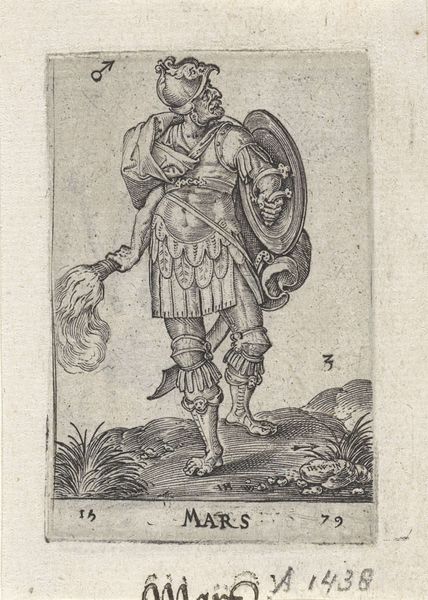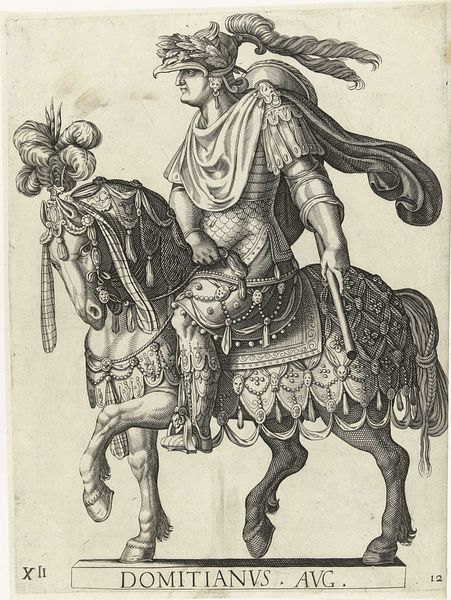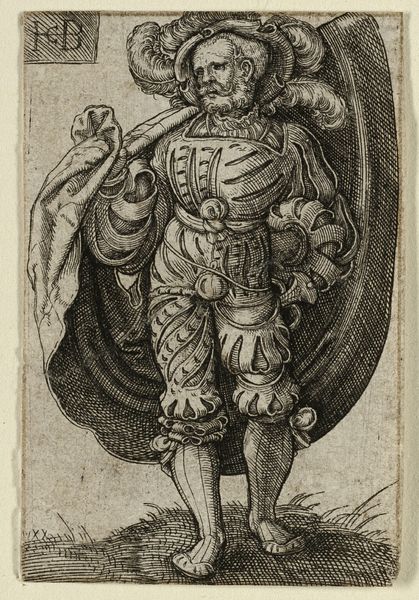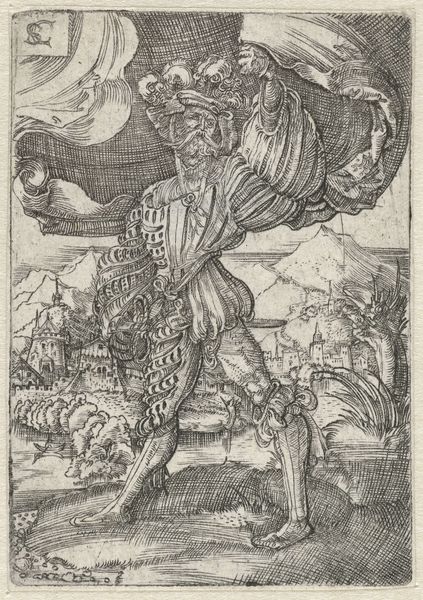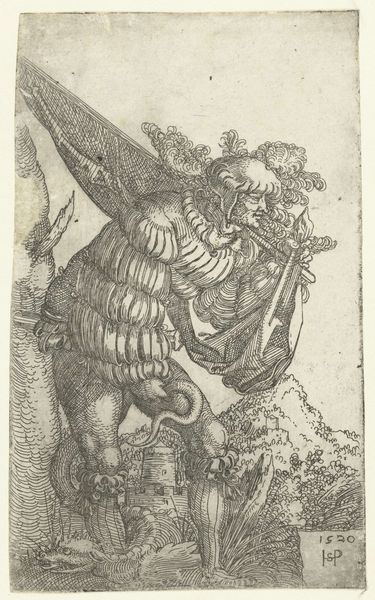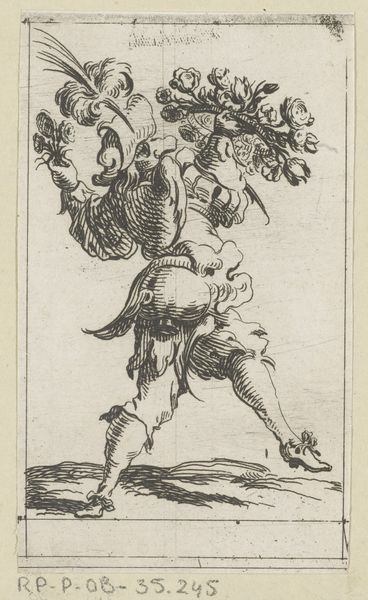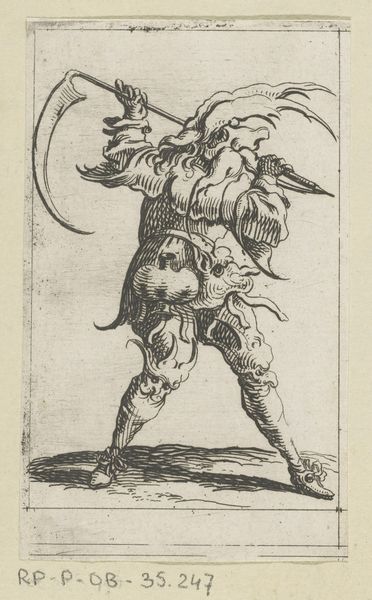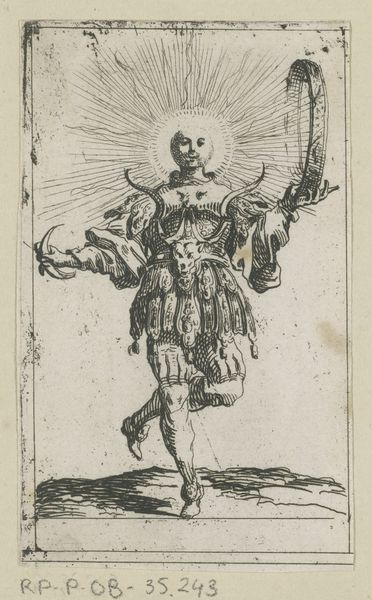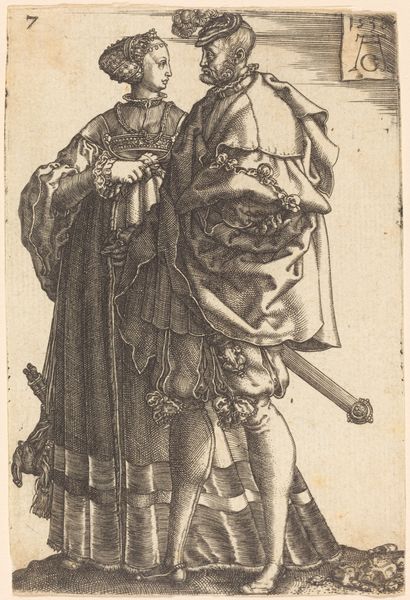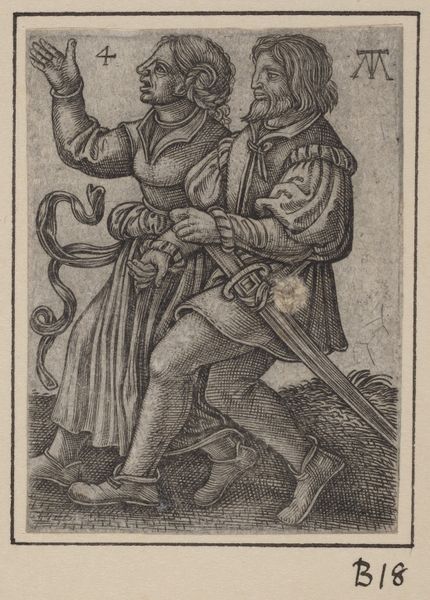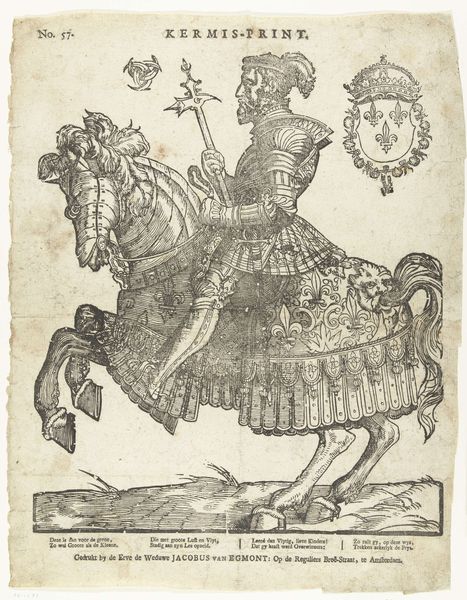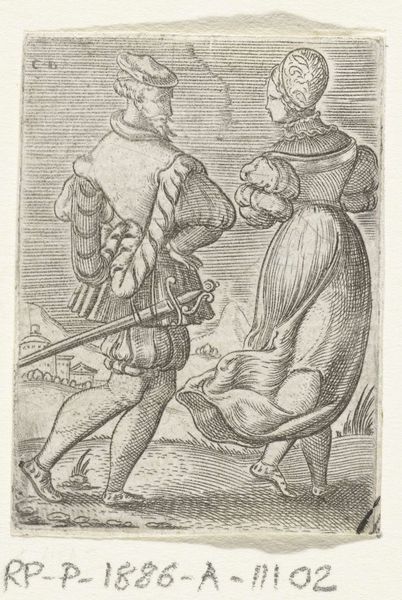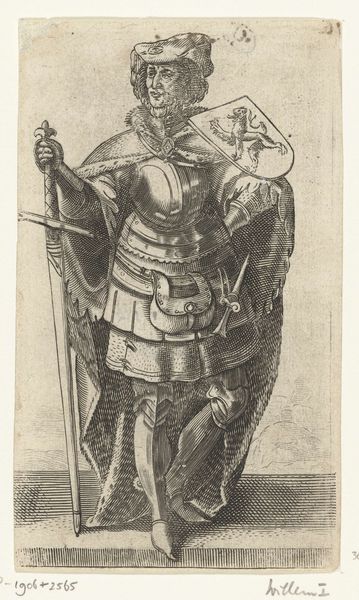
print, engraving
# print
#
figuration
#
11_renaissance
#
history-painting
#
northern-renaissance
#
engraving
Dimensions: height 156 mm, width 100 mm
Copyright: Rijks Museum: Open Domain
Curator: Let’s spend a moment with "Vaandelzwaaier," a Northern Renaissance engraving, thought to be crafted somewhere between 1490 and 1554 by Monogrammist AC. Editor: The details in the garb of that flag bearer are wild – puffy sleeves that look like a freshly baked, elaborately scored loaf of bread and pantyhose adorned with X's, walking bare foot through a desolate stone path. The Renaissance was such a trip, aesthetically! Curator: Indeed. The artist, or craftsperson more accurately, displays such meticulous engraving, from the ornate costume to the very fabric of the banner the figure lifts, caught by some phantom breeze. Note the hatching and cross-hatching to render shade and dimension. Editor: And it looks almost aggressively luxurious, doesn't it? All this lavish ornamentation practically shouts about conspicuous consumption. I mean, who actually made those ridiculous sleeves? The labor implicit is part of the aesthetic, isn't it? Curator: Absolutely. This was a society where appearance held great power and conveyed your social standing. Although relatively small in scale, we feel the full weight of cultural history conveyed through expert line work. I find his assured gaze arresting. Editor: I keep thinking about the role of prints like these. How many impressions were made and how the image moved—was disseminated. Each strike of that press imprinted value and meaning, for those who could afford it. This wasn’t “art for art’s sake." This was commerce; a statement! Curator: That’s a shrewd point. Engravings democratized art in a way painting could not. Editor: Precisely! Mass production shifts the lens, challenging what qualifies as art. This “Vaandelzwaaier” captures it. Material reality—its crafting and societal circulation are essential components to grasp this. It transcends merely pictorial symbolism and instead offers an intriguing look into society's power constructs during the Northern Renaissance. Curator: And I sense the timeless quest for purpose within a fleeting historical period. Thanks for opening a pathway of observation into the deeper materiality.
Comments
No comments
Be the first to comment and join the conversation on the ultimate creative platform.
